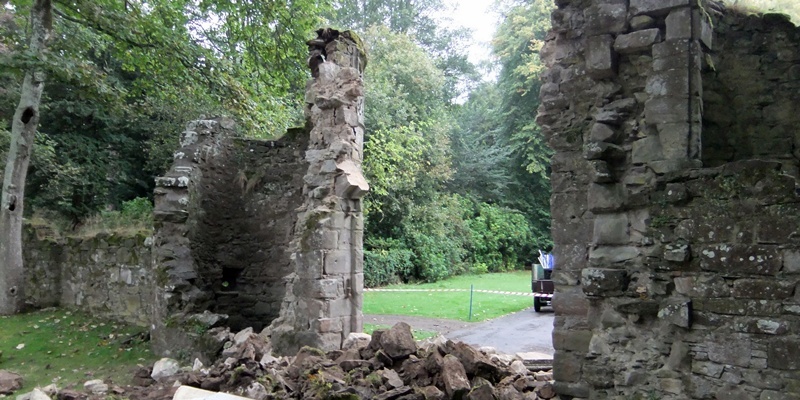A historic archway at the traditional crowning place of Scottish kings is to be restored to its former glory more than a year after it was destroyed by a workman’s van.
It is hoped the work will be completed within 12 months, but it will be ”weather dependent”, as Mrs Bruce explained.
She said: ”There is a real window of opportunity when using the traditional lime mortar. If it is the wrong temperature it will not set properly.
”It is imperative to us that the archway matches the original and the techniques used to rebuild it are the same as those used back in the 16th century though we concede we will not be using horse-drawn carts to ferry the materials.”
Speaking about the accident, Mrs Bruce said: ”The family and staff were devastated when the news came through. It was something we never could have predicted would happen. The one major relief was that nobody was hurt.
”The stonework weighed a number of tonnes and there were a number of families with young children visiting that day.”
She added: ”Architecturally it was one of the worst things to ever happen within the palace grounds but hopefully we will be able to restore the piece to its former glory so it can be enjoyed by people for years to come.”
The van driver had been collecting a marquee from the palace on the morning of September 27, following the Perth Hunt Ball. He was uninjured.
Public access to the palace grounds was not affected, though the area around the archway had to be cordoned off while it was made safe.
Scone was as an ancient gathering place of the Picts, and it is believed the palace grounds were the site of an early Christian church.
The current Scone Palace, a red sandstone A-listed building, was built in 1808 for the earls of Mansfield by William Atkinson. However in the Middle Ages the land was the home of the Augustinian Scone Abbey the coronation place of Scottish kings.
The Courier has learned that work will begin to rebuild the ”priceless” 16th-century structure at Scone Palace in early spring.
Experts warned at the time that repairing the intricate stone monument would be akin to completing the ”world’s largest jigsaw puzzle”.
The archway, which was all that remained of the approach to the Augustinian abbey, was reduced to rubble after the incident in September 2010.
The central armorial panels, of historic importance, were damaged beyond repair when it was hit by the vehicle with one thrown more than 15 metres on to the palace lawns.
Work began immediately to sift, record and rearrange each fragment of the wreckage, which palace administrator Elspeth Bruce believes was the project’s ”saving grace”.
After consulting Historic Scotland and insurance firms, the palace appointed John Addison, one of Scotland’s most prominent structural engineers, to lead the restoration.
A contract went out to tender to specialist masonry and building companies earlier this year and it is hoped the name of the winning firm will be announced before Christmas.
Mrs Bruce confirmed that the Stormont family, who own the building and grounds, were keen to ensure the contract was awarded to local workers.
She said: ”We are so pleased to announce that work will go ahead next year. It has been a complicated process but, despite the warnings from outside, the family and all the staff here at the palace remained hopeful that the archway could be fixed.
”It was a beautiful piece which framed the palace, and was of real historic importance, so to lose it forever would have been devastating.”
She added: ”We have always had full confidence in the structural engineer and architects, who have a great deal of experience in the conservation field.
”The cooperation and professionalism of all the parties involved has meant that we are ahead of schedule.”
Continued…
